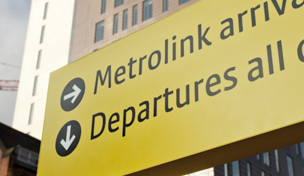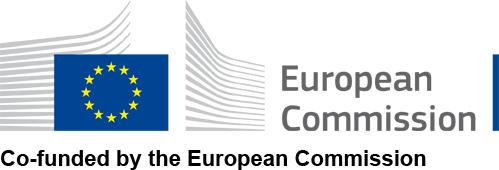Want full & instant access to shape?
To access the full benefits of shape you need to register for FREE
 Register NowAlready registered? Log in here
Register NowAlready registered? Log in here

Welcome to the Shape online resource. This is a quick guide to the features and unique navigation of Shape
Show me how to use Shape SkipWant full & instant access to shape?
To access the full benefits of shape you need to register for FREE
 Register NowAlready registered? Log in here
Register NowAlready registered? Log in here
Analyse
The ANALYSE stage offers advice on how to filter and process the opportunities developed in the Generate stage. It will help you assess their measurable costs and benefits as well as the intangible and often unmeasurable pros and cons, ultimately producing a metric that you can use to compare and then prioritise your opportunities.
Balancing Factors
You now need to make a best guess at the potential impact an opportunity might have on the stakeholders and especially the users, which will help you to effectively allocate the budget.
This is a balance between cost, impact, numbers and time; your decision could be based on maximum impact on a small group, less impact on a larger group, or similar impact but recognised faster. We will consider cost separately below.
If the opportunity involves development or improvement of an existing solution, there may be plenty of information available about the contributors, influencers and suppliers. If it is a new opportunity, you may need to make estimates based on past experience or similar projects.
Revisit the stakeholder work that you produced in the Scope & Frame stage, updating where required, and ensure that you have included every user that could be impacted by the opportunity and its operational implications. If you didn’t use it then, a mind mapping technique can help you to fully visualise who these people are, assess their current standing and the relationships between them.
Measuring impact in isolation is not enough, since an opportunity can have either a positive or negative impact on each of the people/groups affected. Some form of weighting or extra consideration is needed to provide balance. This will almost always be a judgement decision rather than one that is informed by facts or evidence.
For example: One of your opportunities means that a supplier is negatively impacted by a change in specification that excludes their services. This is not necessarily a reason to abandon the idea, instead you could help the supplier to manage the loss by giving them early warning of the change, so that they can tender for new work.
> Have a look at the our case study section in the case study menu for examples of an impact assessment.
Cost
The estimated cost of the final project and its implementation are important when judging whether to proceed with an opportunity at this stage. Later, more accurate figures can be presented with suitable adjustments for the current economic climate.
It is useful to have a rough order of magnitude (ROM) cost estimate to assess the impact of the opportunity against its potential cost, and then judge its suitability against other opportunities.
You will need to break down the cost bands to suit your organisation and the scale of your challenge. You could simply use low, mid and high cost bands, or you might need more specific defined categories. Try to allow for all project costs:
- Management
- Delivery
- Implementation (including publicity)
- Manufacture/build
- Lifetime maintenance
Be consistent so that each opportunity has roughly the same information and costs to allow a fair and even comparison. A spreadsheet can be an effective and transparent way of comparing this information.
You should also consider opportunity costs that are part of the project delivery, rather than the project itself. Examples include:
- Disruption caused during implementation,
- New computer hardware that is future compatible with the proposed software system
- Training for the people delivering the service
- Recruitment of new staff
It’s impossible to know exactly what these costs are, but you might get helpful information by:
- Consulting colleagues with relevant experience
- Asking suppliers for estimates
- Researching similar projects – inside or outside of your organisation
Cost consultants can help with the more complex investigations and feasibility studies for larger projects. For a fee, they will produce a comprehensive analysis to inform your decision-making. If cost consultants are already retained by your organisation on other projects, you may be able to approach them for an informal opinion on your opportunities. At this stage of your challenge, it is unlikely that you will have enough information for them to provide a detailed analysis, so a broader approach would be more suitable.
Opportunity selection
To make an informed decision about the best opportunities to proceed with from your list created during the Generate phase, you need detailed analysis to provide evidence of their benefits.
Analysis
It is helpful to find broad evidence that an approach can to contribute to the desired outcome. Quickly explore your opportunities to help with the decision-making process. This could include:
- User perceptions
- Delivery mechanisms
- Technology
- Material
- Support required etc.
For example:
If an opportunity requires an existing technology, is there evidence that the technology can reliably operate at the scale required?
If the opportunity demands new technology, what can be done to prove its suitability – maybe it’s already being used in a similar sector?
User engagement
Testing opportunities with users is a powerful way of providing insights.
The worldwide web has made it easier than ever to be in contact with large numbers of users. You can use social media, photo and video sharing sites to test ideas and approaches quickly and cost effectively, with real users in real scenarios. This process needs to be carefully managed, as there is a risk of accidentally running into a public relations disaster. Also, the results will be subjective, so they need to be judged carefully and in the right context.
Some other methods of quickly user-testing opportunities include:
- Surveys and questionnaires
- Focus groups and idea generation workshops
- One-on-one interviews
- Anthropological methods
- Co-creation
- Validation workshops
- Observation and advisory groups
- Disseminating Information
Semi-formal research
With some simple initial research you can make a more formal assessment. The aim is to produce roughly 10 headings to score each idea against.
At this stage it is difficult to use actual data such as cost or time of delivery, but try to get estimates from experience, comparable past projects, or specialists in the field. Remember you are only aiming for a comparison of one idea in relation to another at this point, not guaranteeing performance.
You can use absolute scoring e.g. giving each idea a score out of ten), or relative scoring (e.g. idea B is better in this area than Idea A, so scores +1). Spreadsheets are also an easy way to record and compare this information and allow others to contribute.
Key headings might include:
- Predicted impact
- Cost of project
- Difficulty of delivery
- How much of the idea is new
- Timeframe of delivery
- Potential reception by users
- Need(s) it will meet
- Contribution to the overall challenge
- Percentage of the challenge this project could deliver
Keep this information visible and accessible by putting these headings into a simple chart or table and pinning them on your challenge wall.
> Have a look at the relative scoring matrix tool for an example.
Decision-making
At this stage most of your decision-making will be subjective, because although you have developed some evidence for each idea, since there are still many unknowns on the list. Common sense, experience and intuition play key roles, as well as checking with users via interviews, observations or focus groups.
Revisiting your influencers list for elements such as political or PR benefits, public opinion and removing risk factors are also relevant to your consideration.
Priorities
Clarity on the outcomes of each opportunity and how it contributes to the challenge will enable you to make decisions about the range and phasing of your chosen projects. The priority list of recommended opportunities comes together when you consider the cost and impact of an opportunity and any other implications.
The priorities of the chosen projects are directly connected to the priorities of their stakeholders including:
- The citizens and users
- The body (municipality, department, council) responsible for providing and paying for the service
- The body (municipality, department, council, contracted company) actually providing the service
- Leaders and political leaders
You can find an overview of your stakeholders from your work during the Scope & Frame stage.
It’s much easier to provide justification and gain approval for your approach if you keep your priorities clearly stated, accessible and visible so that the opportunities can be connected to stakeholder benefits. A great way to do this is by using challenge wall as described during the Scope & Frame stage.
Case Study 

Project Title
Metrolink: Marketing and Product Interventions
Client
Transport for Greater Manchester
Design Suppliers
Hemisphere, Manchester, United Kingdom
Launch Date
July 2012
The Metrolink system is set to more than double in size by 2015. In 2009, Hemisphere was tasked with developing a new visual identity that would be carried across the whole of the expanded network as new extensions and improvements are implemented. This includes new tram livery design, as well as signage, station stops, uniforms, ticket vending machines and system mapping and literature.
The new identity aims to position Metrolink as a forward-looking and contemporary public transport service and its rebranding will play a fundamental role in the city's drive to position itself as a major European capital.
Read More






